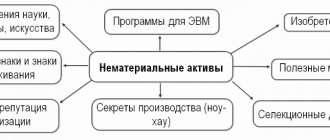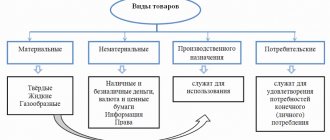Leasing, rent and loan: what is the difference
Equipment rental is also a solution to the problem. But there are disadvantages: you won't be able to charge depreciation on the rental property, and you won't own the equipment itself.
Another way out is lending. But loan terms are often prohibitive for small businesses.
Leasing is a hybrid of lending and renting. It is given on more favorable terms than a loan. As with rent, you will pay for the use of the property, but these payments will help you gradually buy the property. You will also accrue depreciation as you use it if the asset is on your balance sheet.
Pros and cons of leasing for legal entities
Leasing as a financial instrument has a number of advantages for legal entities. But there are also disadvantages.
| pros | Minuses |
| Increasing fixed assets without removing a significant amount from circulation | Relatively short finance lease term, which in most cases does not exceed 5 years |
| Possibility to pay rent for used vehicles according to a convenient schedule | Existing risk of loss of property due to non-compliance with contractual terms |
| Possibility of deferring payments during equipment downtime and in a number of other cases that are specified in the contract | A number of restrictions on the use and maintenance of the rented facility |
| Putting a car on the balance sheet, allowing you to write off depreciation and commission payments as gross expenses | Difficulties in accounting and tax accounting |
| Shifting a number of car maintenance costs to LD | |
| Minimum package of documents for concluding an agreement |
In general, leasing today is the most convenient tool for scaling a business without borrowing funds.
Features of leasing when simplified “Income” and “Income-expenses”
The simplified tax system of 6% involves only accounting for income. When you receive an asset, no income is generated, and you do not keep track of expenses. This means you cannot write off payments under a leasing agreement as expenses. If you intend to lease assets, then it is better to use the simplified “Income minus expenses”.
If the simplified tax system is 15%, take into account leasing payments in expenses at the time of payment. Make sure that payments under the leasing agreement are not advance payments, as they cannot be written off as expenses. Advances arise in two cases:
- the leasing agreement stipulates that payments are made to pay off the redemption price;
- you make current payments earlier than the deadline specified in the agreement.
Write off advance payments as expenses when ownership of the asset is transferred to you.
Important! If the transferred asset is on your balance sheet, keep track of the residual value of your fixed assets - 150 million rubles. If you exceed the limit, you will lose the right to use the simplified tax system.
Car leasing under simplified tax system: postings
Buying a car on lease has become a popular practice among both businessmen and individuals. And if an ordinary citizen only needs to sign the appropriate agreement with the LD and make payments on time, then for legal entities there is a need to account for cars under leasing.
Taxpayers operating within the framework of the general taxation system have the right to reduce the tax base on profits due to leasing payments, and can also count on the deduction of VAT that was paid to the LD. For payers operating within the simplified taxation system, such preferences are not provided. Accounting for leased cars for legal entities using the simplified tax system has the following specifics:
- Leasing expenses cannot be written off to reduce the tax base, as well as other expenses for conducting business activities.
- In the case of applying a single tax on imputed income, the calculation of the tax paid does not provide for the deduction of expenses associated with payments under the leasing agreement.
As a service, buying a car on lease from an LLC in Russia is becoming increasingly popular, as it allows businesses to more effectively manage limited working capital. Today you can buy any equipment and vehicle on lease.
Transaction participants
Leasing of vehicles involves the participation of several parties in the transaction.
Recipient of the car. This category includes legal entities that purchase a vehicle for commercial use.
Car supplier. This is a dealer who interacts with leasing companies.
Lessor. This is a company that acts as a link between the supplier and the recipient of the car and accompanies the transaction from the moment of conclusion to the purchase or return of the car by the recipient.
Insurance Company. The insurer’s task is to issue a CASCO or MTPL policy for a car that is leased.
Purchasing a vehicle on lease includes the following steps:
- The recipient collects a package of documents, selects a car and a lessor, and submits an application.
- The lessor checks the accuracy of the information provided by the applicant, and also evaluates his solvency.
- An agreement for the provision of leasing services is signed.
- Transport is being transferred.
Required documents
The applicant must present the following documents:
- leasing application signed by the head of the enterprise;
- questionnaire;
- copies of statutory documents and personnel orders;
- copies of documents identifying the manager;
- a copy of the certificate of choice of a simplified taxation system;
- certificates from the bank about open accounts;
- balance sheet and other financial documentation as required by the LD.
In addition, the leasing company may require additional documents confirming the reliability of the recipient as a borrower. Providing these documents increases the chances of a positive decision and speeds up the application review process. But it is important to take into account that a legal entity that: has a good credit history can count on successful leasing; has been a profitable enterprise for the last year; has an authorized capital commensurate with the size of the loan.
Accounting for the leased asset
If the leased asset is listed under the agreement on the balance sheet of the lessee, recognize it in accounting as a fixed asset. Its price includes:
- all expected payments under the leasing agreement, including the purchase price;
- costs of delivery, setup and completion of the leased item.
Important! In tax accounting, the initial cost of a leasing asset is equal to the amount of the lessor's expenses for the purchase and setup of property (clause 1 of Article 257 of the Tax Code of the Russian Federation). Even if the asset is on the lessee’s balance sheet.
When accounting for the lessee's balance sheet, create the following entries:
- Dt08 Kt76 - reflects the cost of property received under a leasing agreement;
- Dt08 Kt20/23/25/26/60/76 - reflects the costs of installation, commissioning, etc.;
- Dt01 Kt08 - the leasing object was put into operation;
- Dt 20/23/25/26/29/44 Kt02 - depreciation.
If the leased property is listed on the lessor's balance sheet , reflect the received property on the debit of off-balance sheet account 001.
What is leasing
Leasing is a type of lease agreement (Article 625 of the Civil Code of the Russian Federation), according to which one participant in the transaction - the lessor (LD) - is obliged to purchase certain property from the seller and transfer this property to the second participant in the transaction - the lessee (LP) for a fee for temporary use.
As a rule, the LP himself chooses the property that he wants to temporarily use (Article 665 of the Civil Code of the Russian Federation). At the end of the leasing agreement, the LP either returns the asset to the LD or buys it back - all this is stipulated in the agreement. Issues of accounting for leasing transactions are regulated by Law No. 164-FZ dated October 29, 1998, norms of the Civil Code of the Russian Federation, as well as instructions of the Ministry of Finance of the Russian Federation dated February 17, 1997 No. 15.
The subject of leasing, in accordance with Law No. 164-FZ, can be assets that relate to fixed assets, however, there is a point of view that other property (for example, intangible assets, goods and materials) can be leased/received. Let's see if this is true.
According to Art. 669 of the Civil Code of the Russian Federation and Art. 3 of Law No. 164-FZ, the subject of a leasing agreement can be non-consumable tangible assets (except for natural objects). Art. 3 of Law No. 164-FZ gives examples of such property: buildings, equipment, transport, etc., i.e. objects related to OS. As for intangible assets, they do not have the characteristics of a thing, and goods and materials cannot be recognized as non-consumable. Thus, only OS can be the subject of a leasing agreement.
IMPORTANT! If the leasing object requires state registration, then it can be registered either on the LD or on the LP (Clause 2 of Article 20 of Law No. 164-FZ).
The leasing agreement is drawn up in writing. It indicates the validity period, as well as the schedule and amount of leasing payments - payments under the leasing agreement. Their economic meaning is to receive the LP income from the transaction, as well as compensation for his expenses on purchasing property for the LP.
You can read more about the types of leasing in the article “Leasing as a form of financing capital investments” .
Accounting for transactions under a leasing agreement by a simplified operator depends on which party to the transaction he is - the lessor or the recipient of the leased property.
Accounting for leasing payments
In a simplified manner, the lessee reflects monthly payments with the following entries:
- Dt 20/25/26/44 Kt76 - debt has been formed to the counterparty;
- Dt60/76 Kt51 - payment has been made for the leased item from the current account.
Payments in the form of advances are reflected differently:
- Dt60/76 Kt51 - leasing payment has been made in advance;
- Dt20/25/26/44 Kt60/76 - payment accrued;
- Dt60/76 Kt60/76 - the previously transferred advance payment is credited.
Accounting with the lessor
In accounting, the “simplified” lessor records the leased asset on the account. 03 of the Chart of Accounts (order of the Ministry of Finance of the Russian Federation dated October 31, 2000 No. 94n) at the original cost, formed in accordance with clause 5 of PBU 6/01 for the account. 08, including the amount of input VAT (Order of the Ministry of Finance of the Russian Federation dated March 30, 2001 No. 26n).
IMPORTANT! From 2022, PBU 6/01 will no longer be in force. It will be replaced by FSBU 6/2020. If you want to apply the new standard in 2021, reflect this decision in your accounting policies.
ConsultantPlus experts explained in detail how an organization can switch to accounting for fixed assets and capital investments in accordance with FAS 6/2020. To do everything correctly, get trial access to the system and go to the Ready solution. It's free.
Let's consider the transactions for the acquisition by a simplifier of an object for leasing:
| Debit | Credit | Contents of operation |
| 08 | 60, 76 | An object was purchased for leasing |
| 08 | 20, 25, 26, 70, 76, 60 | Expenses for bringing the object to a condition suitable for leasing are taken into account |
| 03 “Property ready for leasing” | 08 | Leasing property accepted for accounting |
The further accounting procedure depends on which of the leasing parties’ balance sheets will include the property:
- The asset is accounted for by the LD, then the “simplified” reflects the transfer of property through internal postings to the account. 03, and if the asset should be depreciated, then it takes into account depreciation charges in the usual manner.
- If the asset is transferred to the balance sheet of the LP, then the “simplified” lessor does not accrue depreciation in accounting. In addition, the object should be written off from the account. 03:
Dt 91 Kt 03 - asset leased.
This posting is suggested by clause 4 of Order No. 15 of the Ministry of Finance of the Russian Federation dated February 17, 1997 (the order mentions accounts that were in effect before the introduction of the Chart of Accounts No. 94n; we indicate in the accounting entries the accounts that comply with current legislation).
However, this posting is not entirely correct, since ownership of the leased asset does not transfer (clause 1, article 11 of Law No. 164-FZ dated October 29, 1998, clauses 2, 16 PBU 10/99, approved by order of the Ministry of Finance of the Russian Federation dated May 6, 1999 No. 33n, instructions for the Chart of Accounts 94n), therefore we suggest when writing off property from the account. 03 use count. 76. In addition, the transferred property should be reflected in the off-balance sheet account. 011 according to the assessment documented in the leasing agreement. In parallel with the inclusion of leasing payments in income, the simplifier takes into account part of the cost of the leased asset as expenses. Bookkeeping for the “simplified” lessor:
| Debit | Credit | Contents of operation |
| The leased object remains on the LD balance sheet: | ||
| 03 “Property leased” | 03 “Property ready for leasing” | The property has been leased |
| 20, 23, 25, 26, 29, 44 | 02 (subaccount “Depreciation of property leased”) | Depreciation has been calculated on an asset leased |
| The leased object was transferred to the balance sheet of the company: | ||
| 76 | 03 “Property ready for leasing” | The property transferred to the balance sheet of the company is reflected; |
| 011 | The property transferred to the balance sheet of the company is reflected behind the balance sheet | |
The transfer of property on lease is formalized using a standard primary document (for example, OS-1) or a free-form acceptance and transfer certificate, taking into account the requirements for mandatory details (clause 2 of article 9 of the law of December 6, 2011 No. 402-FZ, art. 655 Civil Code of the Russian Federation). The chosen form must be approved by the organization’s accounting policy and specified in the leasing agreement.
The return of property under a leasing agreement from the “simplified” lessor is reflected using a similar primary basis. In this case, the accountant will make the following accounting entries:
| Debit | Credit | Contents of operation |
| The leased object was accounted for on the LD balance sheet: | ||
| 03 “Property ready for leasing” | 03 “Property leased” | Reflects the return of property that was previously leased and planned to be leased/leasing again |
| 01 | 03 “Property leased” | The return of property from the LP is reflected (the object will no longer be rented/leasing) |
| 91 “Other expenses” | 02 | Reflects depreciation on returned property not used in production activities (or not leased) |
| The leased object was accounted for on the balance sheet of the company: | ||
| 01, 03 | 76 | Property whose lease has ended has been accepted for accounting |
| 011 | The returned leased property is written off from the off-balance sheet account | |
Car leasing on the simplified tax system
Car leasing is the most popular today. The redemption price in this case is equal to the acquisition costs, which can be expensed only in the year when the car becomes the property of the lessee. Write off these costs in equal parts throughout the year. Leasing payments include repayment of the cost of the car and additional costs for the lessee: interest, insurance costs and transport tax.
Before redemption, the car belongs to the lessor, which makes car leasing more accessible than a car loan. The vehicle is registered with the traffic police. By agreement of the parties, it can be registered with the lessor or the lessee. The payer of the transport tax will be the one in whose name the vehicle is registered. In case of temporary registration of a car with the lessee, the payer will be the lessor.
To properly keep records of leased assets and easily cope with accounting, payroll and reporting, work in the cloud service Kontur.Accounting. The first month of work is free.
How to get property
Simplified companies and individual entrepreneurs usually do not have sufficient working capital to immediately acquire ownership of the necessary property. Then organizations that provide property for leasing can help with this.
Subclause 4 of clause 1 of Article 346.16 of the Tax Code of the Russian Federation directly allows for the reduction of the single tax at the expense of leasing expenses under the simplified tax system. Namely, for the corresponding payments under the agreement for the acceptance of property on a leasing basis. They do this on the date that was later:
- day of transfer of payment;
- the last day of the month for which the payment is due.
VAT on leasing payments and redemption value is taken into account in costs along with the payments to which it relates.
Leasing can be different
For small businesses, whose representatives are individual entrepreneurs, leasing is a very popular business operation. Demand has generated several types of leasing offers:
- express leasing;
- leasing, without assessment of financial condition;
- specialized leasing (depending on the chosen tax regime).
Express leasing
Most often chosen by individual entrepreneurs, since its conditions optimally meet the interests of small businesses. The individual entrepreneur submits a leasing application to the company, which considers it at an accelerated pace: the decision on leasing is made no longer than a day, sometimes within 1 hour. If there is no refusal, the lessor assumes obligations to finance the lease for the applicant. After voicing the decision, the individual entrepreneur must provide a package of documentation, which is not numerous, so that the leasing transaction can be formalized. The parties quickly agree on the terms of the lease and enter into an agreement.
Leasing excluding financial assessment
This leasing product offers relevant services without assessing the financial condition of the entrepreneur, or such assessment is carried out to a minimum extent. Of course, the lessor is at financial risk, but as compensation he intends to receive a larger than usual down payment - up to half the cost of the leased property, as well as a higher interest rate. Often, an additional guarantee is provided by a third party guarantee for the lessee.
How to apply?
CASCO for a leasing car can be issued at the request of the lessee, if he has such an agreement with the leasing company, or at the request of the lessor.
In practice, the second option is mainly used.
Registration of insurance consists of the following stages:
- Preparing a package of documents and contacting the insurer
- Drawing up a contract and determining the terms of insurance (cost, risks, term, payment). In each specific case, the terms of the agreement may differ.
- Inspection of the insured vehicle. The inspection report records the condition of the vehicle and notes any existing damage so that in the future they will not be reported as an insured event.
- Signing of the agreement by the parties to the transaction. Both parties put their signatures (stamps) on the insurance agreement. Before doing this, you must carefully check the terms of the transaction specified in the document.
- Payment of insurance premium.
- Receipt of documents by the policyholder. The policy is most often issued in one copy to the policyholder, and other interested parties are provided with copies of the document.
What is more profitable to buy a fixed asset on lease or credit?
The total costs associated with the purchase of a new property will consist of several parts:
- Purchase cost
When buying on credit, the seller usually “doesn’t care” where the businessman got the money and this does not affect the price of the object in any way.
But leasing companies often cooperate with manufacturers or suppliers of equipment and vehicles. Therefore, the buyer can count on a discount.
- Bank interest or leasing company income
Here the situation is the opposite - usually interest rates on bank loans are lower than on leasing. But this can be compensated for by the discount provided.
- Tax savings
Here the result depends on which taxation system the buyer uses.
Example
Let's consider purchasing a machine worth 2,400 thousand rubles. (including VAT). The validity period of loan and leasing agreements is equal to the useful life of the machine. The total overpayment for the duration of both contracts will be the same and amount to 30%.
- BASIC – loan.
VAT deduction:
VND = 2,400 / 120 x 20 = 400 thousand rubles.
Income tax savings:
PR = (2,400 / 1.2) x 0.2 + 2,400 x 0.3 x 0.2 = 400 + 144 = 544 thousand rubles.
Total tax savings:
N = 400 + 544 = 944 thousand rubles.
- OSNO – leasing.
VAT deduction:
VND = (2,400 x 1.3) / 120 x 20 = 520 thousand rubles.
Income tax savings:
PR = (2,400 x 1.3) / 1.2 x 0.2 = 520 thousand rubles.
Total tax savings:
N = 520 + 520 = 1040 thousand rubles.
It can be seen that with OSNO, leasing is significantly more profitable, because in this case, VAT is deducted not only from the cost of the object, but also from the amount of income of the leasing company.
However, this situation can be looked at from the other side. If the fixed asset was purchased on credit, then the VAT deduction is taken immediately from the entire cost of the object. And when leasing, VAT is “spread out” over the entire term of the contract.
Therefore, if the object is expensive and the contract term is long, then it may be more profitable for a businessman to take out a loan and reimburse the tax immediately, albeit in a slightly smaller amount.
- Under the simplified tax system “Income minus expenses”, tax savings for the period of validity of the loan and leasing agreement will be the same.
STS = (2400 x 1.3) x 0.15 = 468 thousand rubles.
- If a businessman applies a single agricultural tax, then the reduction in the tax amount will also not depend on the method of purchasing the object:
Unified agricultural tax = (2400 x 1.3) x 0.06 = 187.2 thousand rubles.
But here we also need to take into account the time factor. If the object was purchased on credit, then with the “simplified” and unified agricultural taxes, its entire cost can be immediately attributed to expenses (clause 3 of article 346.16 and clause 4 of article 346.5 of the Tax Code of the Russian Federation). When leasing, write-off will occur gradually. Therefore, other things being equal, a loan for a businessman will be more profitable, the longer the term of the agreement.
What doesn’t make lessors happy?
Why is leasing not as widespread as it could be, although it occupies a serious segment of small and medium-sized businesses? This is probably due to its features for the providing party:
- the amounts of leasing agreements are rarely large, otherwise it would be more profitable to simply buy an asset, therefore they are of less interest for large businesses;
- Individual entrepreneurs often do not reflect the actual financial condition in the reporting documents, which makes leasing operations a risky undertaking for the lessor.








